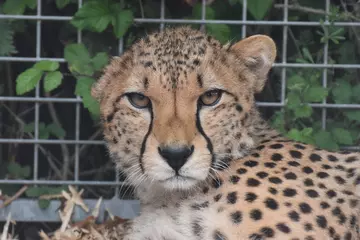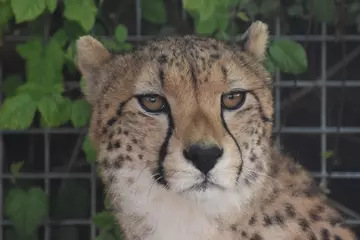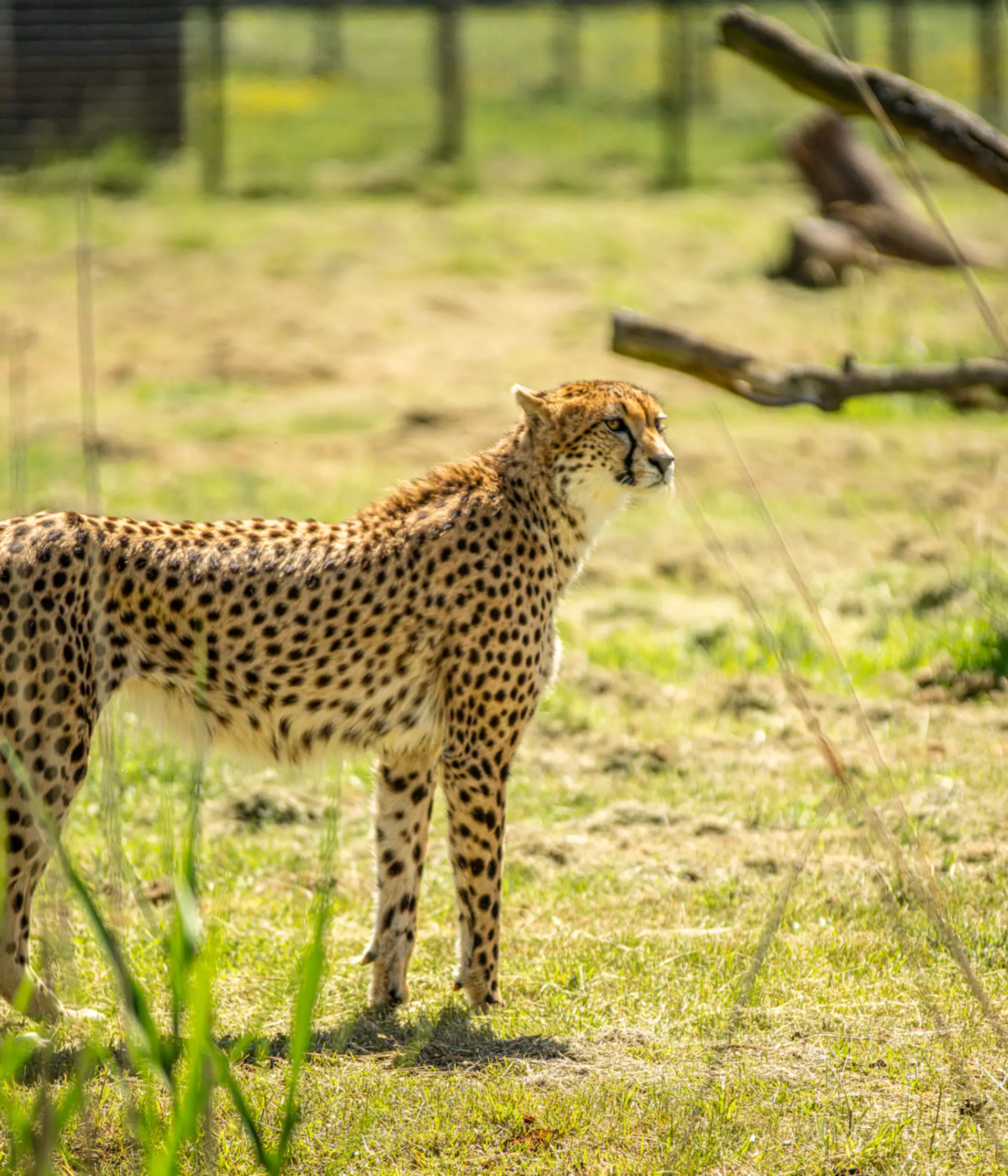
Cheetah facts

How fast can cheetahs run?
Cheetahs can reach speeds of up to 65mph and are the world's fastest land mammal. A cheetah can go from 0 to 60 mph in only three seconds! Their powerful back legs and large muscles give them their amazing running power, and their clawed feet grip the floor as they sprint. However, they can only run at their prey for relatively short distances, so prefer to creep up on and then spring into action.
What do cheetahs look like?
The name 'cheetah' derives from a Hindi word – Chita – which means ‘the spotted one’. The spotted markings on cheetahs' fur helps them to camouflage with their surroundings when hunting prey, and the pattern is unique to each cheetah, just like a human fingerprint. You'll also notice that cheetahs have a long tear drop shaped black line from the inside of the eye to the mouth. It's thought that this helps to eliminate glare during daytime hunting.
Cheetahs also have a long tail, which is used for balance and to help steering when making fast turns. The tail is also useful to help cubs to follow their mother through high grass.
What do cheetahs eat?
Cheetahs are carnivorous so they will hunt and kill other mammals to eat. Animals they prey upon include gazelles, impalas, antelope and birds. They hunt for food in the open and attack quickly with speed, instead of stalking their prey like lions and tigers.
Cheetahs are diurnal, which means they are active during the day, hunting and eating in the daylight when other predators are resting in the sun. This limits the competition for food from other predators.
Another interesting fact is that cheetahs may only need to drink once every three to four days because they get fluid from their food.
10 things you didn't know about cheetahs

Are there cheetahs at Whipsnade Zoo?
Three cheetah brothers sprinted into Whipsnade Zoo in May 2022 as part of the European Endangered Species Programme. Billy moved to Edinburgh Zoo in March 2025. You'll find Fred and Robyn in Cheetah Rock, in the Africa area of the Zoo, close to our hippos.
Fred

Fred is our sassiest and most distinctive cheetah. He's always the first to find his food and brings plenty of attitude. You can spot Fred by looking out for his folded down right ear, or the thick black band at the end of his tail. If he’s not up and about you will find him lying with at least one of the others, grooming and cuddling!
Other ways to recognise Fred include his almond shaped eyes, and a distinct large spot on the corner of his left eye.
Robyn

As the social butterfly of the group, Robyn likes to be in the company of the others, especially Fred. He can be wary of new things and usually takes a little more time to become confident. Robyn can be difficult to tell apart from Fred, but he has more 'D' shaped eyes and a distinctive long spot under his right eye.
Robyn's spots also form triangles in the corner of his eyes, which are shaped like the letter D tipped sideways.
About Cheetah Rock
You can view our cheetah trio from an African style hut, where floor to ceiling glass are the only thing separating you from the animals.
Learn about ZSL’s involvement with these amazing animals via the Cheetah Conservation Programme in Tanzania and curious cheetah facts that are displayed in the viewing area. If you’ve ever wondered what field conservation work is like, we offer you the opportunity to ID individual cheetahs from tourist photographs send in and field sightings. And look out for our safari Land Rover, depicting real life cheetah conservation activities in the African savannah.
Cheetahs face a number of threats in the wild, including habitat loss and the Illegal Wildlife Trade.
At ZSL, we’re working at the cutting-edge to help overcome the threats facing endangered cheetahs in Africa and support the recovery of this Vulnerable species.
